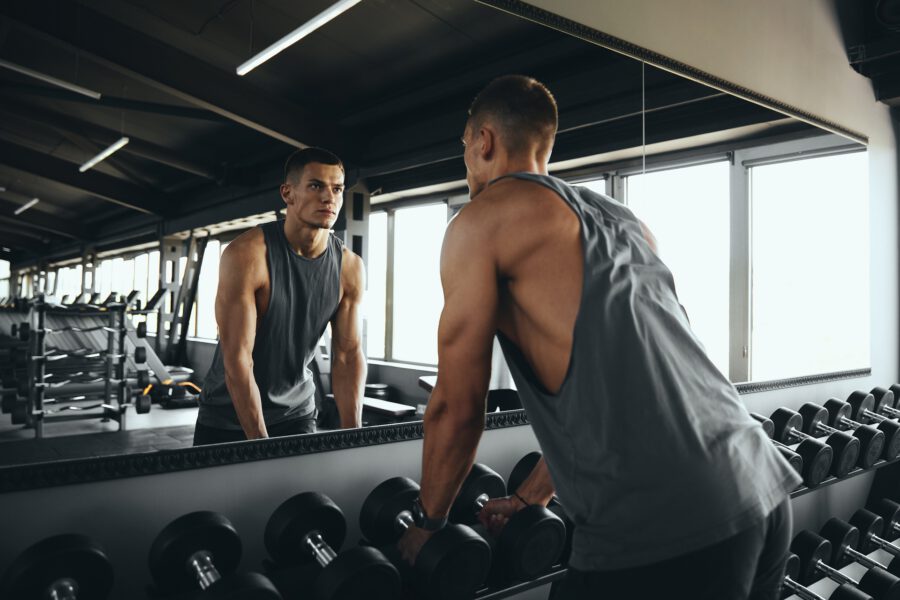Mechanical Tension vs. Metabolic Stress: Which is Better?
We all know that lifting weights builds muscles, and if you do it long enough, you’ll see your muscles grow bigger and stronger. But let’s talk about the age-old gym debate: do muscles grow more from lifting heavy or chasing the pump?
If you want to prioritize your efforts and maximize results, it’s worth understanding which one has the bigger impact on hypertrophy. On one hand, heavy lifting puts your muscles under serious tension, forcing them to adapt and grow stronger. On the other hand, high-rep training that builds “the pump” floods your muscles with metabolic byproducts that also stimulate growth.
In this article, we’ll break down the science of mechanical tension and metabolic stress, and explore what’s more important for muscle growth.
Lifting heavy and going to the gym a few times a week are just the first steps. The real magic happens in the very specific environment inside your muscle cells.
Turns out, your muscles require two triggers to develop: Mechanical tension and metabolic stress.
Think about the time you are lifting heavy weights and you are in the last few reps of your heavy squats or bench press, when you are physically straining against the weight, that’s mechanical tension.
Mechanical tension is the direct force your muscle fibers are dealing with as they contract and stretch under a really challenging load. It’s the intense sensation of strain that you feel when you push your absolute limits.
When you challenge yourself with a heavy load, you are literally creating essential microscopic tears or damage to the muscle fibers. Your body responds by not just patching up these microtears but rather overcompensates, making these fibers thicker and stronger, allowing you to lift that same load more easily the next time around.
The physical strain you experience when lifting activates key growth factors like mTOR, which signals cells to grab more protein and start the muscle rebuilding process.
Metabolic stress is all about that burn and pump you feel when cranking out high-rep sets. Scientifically, metabolic stress happens when your muscles are pushed to the limit through higher reps, shorter rest, and sustained effort.
When your muscles are working hard to overcome the demand you are putting them through, they start to accumulate byproducts like lactate, hydrogen ions, and other metabolites. This buildup makes your muscles swell, burn, and fatigue, and while uncomfortable, it actually signals your body to grow.
As you perform higher-rep sets, your muscles quickly use up their immediate fuel (ATP and phosphocreatine). To keep going, your body shifts to anaerobic pathways, which produce energy but also release byproducts like lactate and hydrogen ions.
These byproducts accumulate in the muscle, lowering pH (making the muscle more acidic). This “metabolic stress” disrupts the internal environment and becomes a stimulus for muscle growth
Early in a set, your body uses primarily slow-twitch muscle fibers. But as fatigue builds, your nervous system is forced to recruit more fast-twitch fibers, which are the ones with the highest potential for size and strength gains.
As blood rushes into the working muscles, the muscle fibers literally swell. This “pump” effect stretches the muscle cell membranes, which activates signaling pathways for muscle growth.
Advanced lifters perform techniques to maximize metabolic stress and achieve the “pump” sensation more effectively, such as drop sets, supersets, blood flow restriction (BFR), or simply pushing through those high-rep sets with minimal rest.
There’s no debating that both mechanical tension and metabolic stress are essential to achieve optimal muscle growth and strength. Together, they create the most effective environment for hypertrophy.
But the short answer is mechanical tension.
Your body adapts to the specific demands you place on it. When you lift heavy weights, you're demanding that your muscles generate maximum force. To meet this demand, your body builds bigger, stronger muscle fibers. Both lifting heavy weights with low reps and light weights with high rep ranges can help you build muscles, but light weights with high reps don't create the same force demand that heavy weights do.
In addition, heavy loads immediately recruit your largest, most growth-prone muscle fibers (fast-twitch type II fibers). These fibers have the greatest potential for size increases. Light, high-rep training relies primarily on smaller slow-twitch fibers and only recruits the big fibers when fatigue sets in. This means less total stimulus for your highest-potential muscle fibers.
Studies show that mechanical tension more directly stimulates the mTOR, which is your main driver for the muscle rebuilding process. The physical stress of high-tension contractions appears to be a more specific signal for muscle growth than the metabolic byproducts of high-rep training.
While metabolic stress can aid in allowing you to develop bigger muscles, the temporary swelling and pump don’t translate directly to permanent gains.
Here’s a plan for women that combines both principles to maximize your muscle growth:
Here’s a plan for men that combines both principles to maximize your muscle growth:
One of the most effective ways to maximize mechanical tension is by controlling the eccentric phase, aka the lowering or “negative” portion of the lift.
Research shows muscles can handle more force eccentrically than concentrically, which means slowing down the negative puts fibers under higher strain and creates greater micro-tears that the body later repairs with stronger, thicker muscle tissue.
This ties directly into time-under-tension (TUT), which is the total duration or tempo your muscles are actively working during a set. The longer tension or slower tempo (without sacrificing load) means the more opportunity to recruit fibers and keep growth pathways active.
Try this: Have at least 1 or 2 cable exercises for each muscle group you are working on. Cable exercises place your muscle in constant tension, no matter the angle your muscle is at in the rep range.
Exercises:
- Cable flyers or Cable crossovers (Chest)
- Cable rows or lat pulldowns (Back)
- Cable lateral raises or face pulls (Shoulders)
- Cable curls or tricep pushdowns (Arms)
- Cable kickbacks or cable squats (Legs)
Building your muscles isn’t just about showing up. It’s also about applying the right principles with intention. The goal isn’t to replace what’s already working for you, but to give you added clarity and practical tools that can enhance your current training approach.
At the end of the day, it’s not about subscribing to one principle alone, but about combining them to maximize growth. You can prioritize mechanical tension as your foundation, then strategically layer in other methods, such as controlled negatives for time-under-tension, high-rep finishers for metabolic stress, and cable variations for constant load throughout the range of motion.

